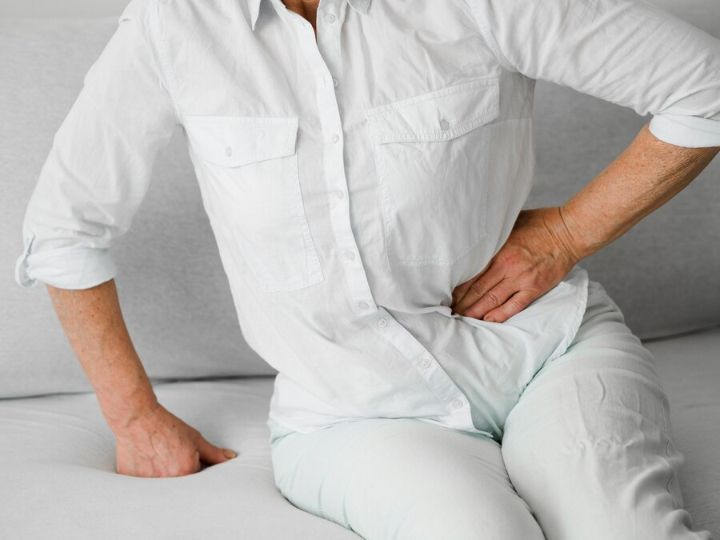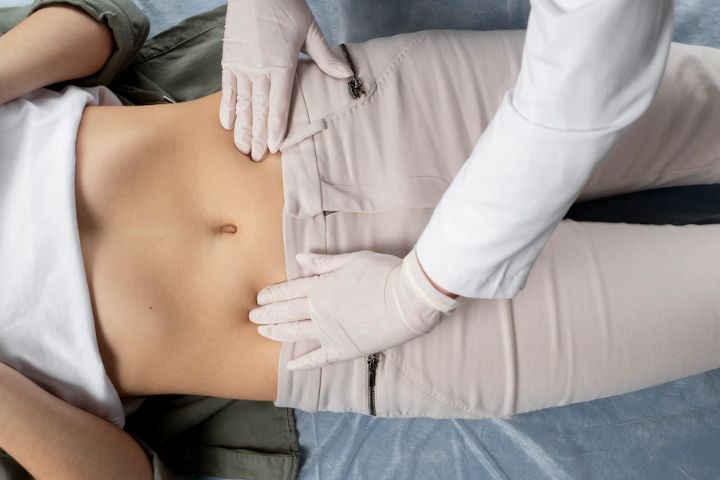Urge faecal incontinence is a condition that affects many people, yet it remains underdiagnosed and undertreated. This type of incontinence is characterised by an urgent need for a bowel movement and the inability to control the urge. It can be distressing and embarrassing, leading to a decreased quality of life for those who suffer from it.
There are several causes of urge faecal incontinence, including neurological conditions, muscle damage, and other health factors. Symptoms can vary from person to person but often include a sudden need for a bowel movement, leakage of stool, and the inability to reach the toilet in time.
Treatment options for urge faecal incontinence include medications, exercises, and surgery. Pelvic floor exercises, in particular, can effectively strengthen the muscles that control bowel movements. It’s important to seek medical attention if you suspect you have urge faecal incontinence, as early intervention can improve outcomes and quality of life.

Photo Credit: ArtPhoto_studio
Urge faecal incontinence can be a challenging condition to manage, but there are many ways to improve bowel control and prevent embarrassing accidents from occurring.
Pelvic floor exercises, also known as Kegels, are key to managing urge faecal incontinence. These exercises involve contracting and relaxing the muscles that support the bladder, uterus, and rectum. Strengthening these muscles can improve bowel control and reduce the frequency and severity of incontinence episodes.
There are several treatment options available that can help manage urge faecal incontinence, including medications, biofeedback training, and surgery.
While managing urge faecal incontinence is important, preventing episodes from occurring in the first place is even better. Here are some effective prevention strategies:
By incorporating these exercises, treatment options, and prevention strategies into your daily routine, you can effectively manage urge faecal incontinence and enjoy a better quality of life.
Urge faecal incontinence is a condition that causes an uncontrollable urge to defecate, resulting in the involuntary loss of stool. People with this condition may experience symptoms such as the sudden and urgent need to use the bathroom, difficulty controlling bowel movements, and the loss of stool or feces without warning.

Photo Credit: Freepik
Urge faecal incontinence can be triggered by a variety of factors, including certain foods or drinks, emotional stress, physical activity, and medications. It can also be caused by neurological conditions, muscle damage, or other health factors that impact bowel control.
The symptoms of urge faecal incontinence can vary from person to person, but can include:
If you experience any of these symptoms, it is important to speak with your doctor to determine the cause and receive appropriate treatment.
Urge faecal incontinence can be triggered by a variety of factors, including:
It is important to identify your individual triggers to help prevent episodes of urge faecal incontinence.
Diagnosing urge faecal incontinence may involve a variety of tests and assessments, including:
If you are experiencing symptoms of urge faecal incontinence, speak with your doctor to determine the appropriate diagnostic tests and treatment options.

Photo Credit: Freepik
Pelvic floor dysfunction refers to a range of conditions that can affect the pelvic floor muscles, which play a crucial role in bowel control. When the pelvic floor muscles become weakened or damaged, they can lead to problems with bladder and bowel control, including urge faecal incontinence.
The pelvic floor muscles are a group of muscles that run from the pubic bone at the front of the pelvis to the tailbone at the back. They support the pelvic organs, including the bladder, uterus (in women), and rectum.
When these muscles are working correctly, they can help control urine and stool release. However, if they become weakened or damaged, they may not be able to contract and relax properly, which can lead to incontinence.
Several types of pelvic floor dysfunction can contribute to urge faecal incontinence, including:
Each type of dysfunction requires a different approach to treatment, which is why it’s important to get a proper diagnosis from a healthcare professional.
If a healthcare professional suspects pelvic floor dysfunction contributes to urge faecal incontinence, they may refer the patient to a pelvic floor physiotherapist or specialist for further evaluation.

Photo Credit: Freepik
A pelvic floor physiotherapist can perform a range of tests to assess the strength, coordination, and function of the pelvic floor muscles. Based on the results, they can recommend exercises and other strategies to improve bowel control.
Other treatments may be necessary, such as biofeedback training, electrical stimulation, or surgery. The most appropriate treatment will depend on the underlying cause of the incontinence and the extent of the muscle damage.
Pelvic floor exercises, also known as Kegels, are essential to pelvic floor rehabilitation for urge faecal incontinence. These exercises involve squeezing and relaxing the pelvic floor muscles to improve their strength and flexibility.
Pelvic floor exercises can be done by men and women of all ages, including those who are pregnant or postmenopausal. They can also be helpful for those who have experienced nerve damage or undergone pelvic surgery.
A pelvic floor physiotherapist can guide how to perform these exercises correctly and create an individualised exercise program to meet the patient’s specific needs.
Urge bowel incontinence is typically caused by an overactive bladder, which leads to a sudden and uncontrollable urge to have a bowel movement. It may be triggered by neurological conditions, nerve damage, infections, or other underlying medical issues affecting the rectum and colon.
Treatment for urge bowel incontinence may involve a combination of approaches, such as dietary changes, bladder training, pelvic floor exercises, biofeedback, and medications to relax the bladder or regulate bowel movements. In some cases, surgery may be considered for severe or refractory cases.
The urge to have a bowel movement is a natural response of the body’s digestive system. It is usually triggered by the stretching of the rectum as stool accumulates, signaling the nervous system that it is time to empty the bowels. Factors such as diet, hydration, and gastrointestinal motility can also influence the urge.
Several medications can be used to manage bowel urgency and incontinence. These may include anticholinergic drugs that help relax the bladder and reduce spasms (e.g., oxybutynin, tolterodine) or medications that slow down bowel contractions and increase stool consistency (e.g., loperamide).
The specific medication prescribed will depend on the individual’s condition and medical history, so it’s essential to consult a healthcare professional for proper evaluation and treatment.